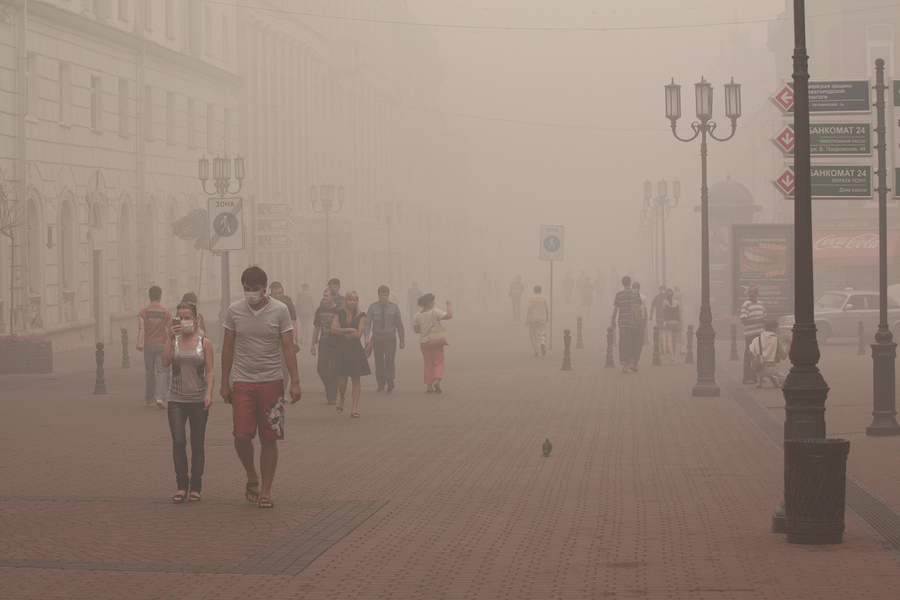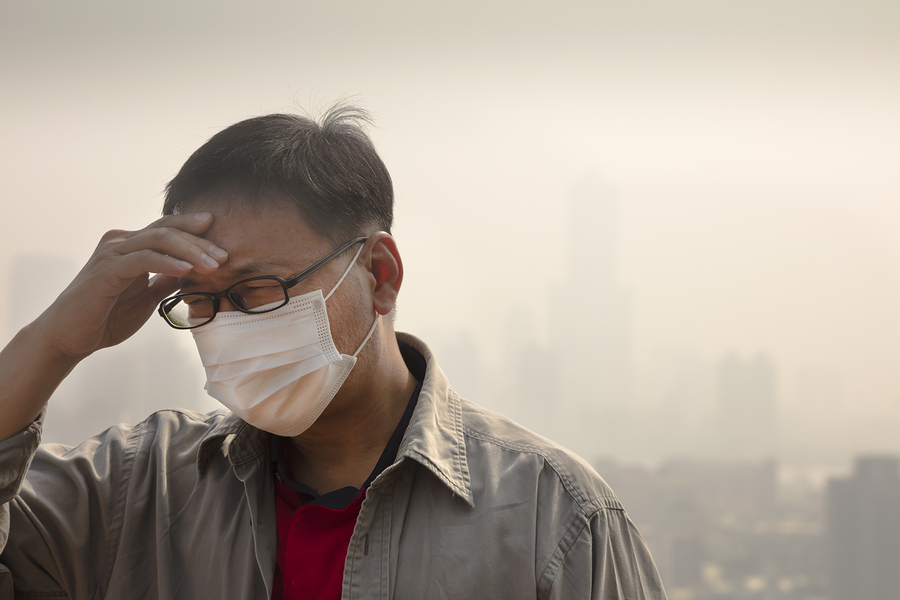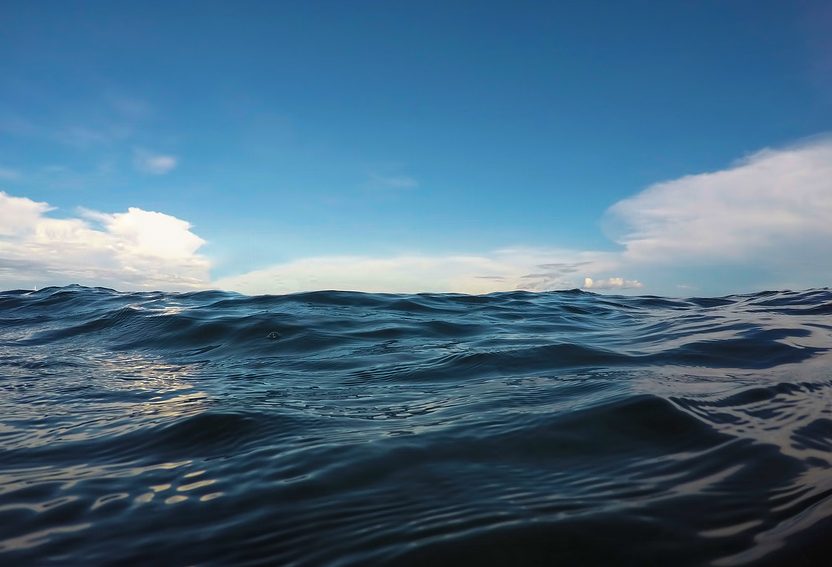I think fossil fuels are great.
In their place.
And that place is underground and undisturbed by human activity.
The reasons why are kind of obvious:

And here is an effect that is less immediately obvious, but which might end up killing a lot more people:
That picture is what most of the arctic icecap now looks like in the summer. In case you didn’t know, it’s not supposed to be blue and wobbly. It’s supposed to be white and hard and make your tongue stick to it if you lick it.
This is a major problem. The more greenhouse gases heat the earth, the less white ice we have to reflect sunlight back into space where it belongs and the hotter the world gets. Because I live in a place where I can die if my air conditioner breaks down during a heatwave I don’t appreciate anything that makes global warming worse.
Also, I feel some mild concern for the millions of other lives that are at risk.
After all, some of those people make my shoes.
Fortunately, we have everything we need right now to get our greenhouse gas emissions under control and slam them down to almost zero in short order. And the one item that will almost certainly be of greatest benefit in stopping global warming is the humble solar panel.
As a result, whenever I see someone on the internet attempt to equate the environmental harm caused by solar power to that of burning fossil fuels, I roll my eyes so far back in their sockets I can describe in detail the contours of my own brain.
While some environmental harm will result from the manufacture of solar panels, it is far less than from burning coal, oil, or natural gas. The amount of harm that results per Watt of solar panel produced is decreasing. Within a decade it should be reduced to a trivial amount.
Solar panels are no more dangerous or toxic than dozens of other electronic items you have in your house. One of which you keep in your pants and rub against your face multiple times each day.

“Hey kids! Eat Fruit Loops! My malformation isn’t diet related!”
The very idea that solar panels could be anywhere as bad as burning fossil fuels is loopier than a box of cereal with a cartoon toucan on the front.
Their Argument
While they’re not as common as they used to be, people who claim solar power is as bad or comparable to fossil fuel use still crop up on the internet surprisingly often. Maybe some of them are just trying to insist the world is as miserable as they feel, but I suspect most are just bored and looking for a fight.
These people claim a panel that which provides clean electricity for 25 or more years, is somehow as bad as burning coal to produce the equivalent amount of electricity.
That idea is nuttier than a lumpy chocolate bar.
Energy Payback Time
Solar panels do not release greenhouse gases when they generate electricity. There are no secret deliveries of coal to your panels overnight, nor do they have a little connection to the gas mains, and they definitely don’t drive down to the servo to tank up on unleaded.
As a result, their only source of emissions is from their manufacture and a very small amount from transport.1
The energy payback time of solar panels is how long it takes them to produce as much energy as was required to make them. Because solar panels produce electrical energy, which at the moment displaces carbon intensive fossil fuel generated electricity, we can be confident that if they produce more energy over their lifetime than is needed to make them, then they will reduce emissions overall.
Fraunhofer Labs Says PV Energy Payback Is Under One Year

Interestingly, Sicily’s coat of arms is actually a coat of legs.
The Fraunhofer Institute For Solar Energy Systems in Germany produced a report in November 2016 that says solar panels in Sicily, which is a very sunny location for Europe, have an energy payback period of one year or less.
According to PVwatts most of Sicily is worse for solar power than Hobart. That is just embarrassing. A place in Europe that is famous for sunshine is slightly worse for solar power than Australia’s worst location? No wonder my father emigrated to Queensland to raise a crop of skin cancers.
Solar panels in Sydney, which is a fairly typical location for solar power in Australia, will produce around 14% more electricity than in Sicily. So even including inverters, roof racking, cables, and other hardware2, we are still looking at one year in Australia.
This means that if solar panels are produced with energy as dirty as they displace and have a lifespan of 25 years they will cut 25 times more emissions than are produced making them.
But the results should be even better than that. In Australia solar electricity mostly displaces coal use and a smaller amount of natural gas while the electricity used to manufacture a Chinese solar panel may now only be around 60% generated from coal. This means, on average, a kilowatt-hour of Chinese electricity is cleaner than a kilowatt-hour generated in Australia. So making panels in China to generate in Australia accelerates the energy payback3.
An Argument From Economics
Of course, it’s not necessary to rely on smart German people to know that solar panels greatly reduce emissions. A 5th grade education will do.
Solar panels are now available in Shanghai for around 50 cents a watt. Over 25 years one watt of typical solar panel in Australia will produce around 34 kilowatt-hours of electricity. As every 5th grader knows, the cost of industrial electricity in China is around 16 cents a kilowatt-hour4. So even if every single cent in the cost of a solar panel went into paying for electricity, it would still produce around 11 times more electricity than it took to make5.
Energy Payback Times Will Continue To Improve
While solar panels in northern Europe won’t perform as well as those in Australia, they will still cut far more emissions than their production releases. Most of the world’s population lives in areas sunnier than Europe, so the average solar panel will do well.
Energy payback times will also continue to decrease thanks to improved panel efficiency and manufacturing techniques. This may not occur as rapidly as in the past, but it will continue.
And thankfully the energy used to create solar panels is becoming cleaner over time. China is rapidly expanding renewable generation and now has more solar and wind capacity than any other country6.
Are Solar Panels Chock Full Of Dangerous Chemicals?
Dangerous chemicals are used in the manufacture of solar panels! Not only are these toxic chemicals destroying the environment around manufacturing plants, but after the panels are thrown out the toxins will leak and contaminate groundwater and maybe kill us all!
This approach is much more popular among concern trolls these days than arguing about energy payback times. In an online discussion about the environmental harm caused by coal or other fossil fuels it’s not unusual for someone to chime in and say how environmentally dangerous solar panels are. This implication is that we’ll be sorry we were mean to coal when our children are toxic mutants living in a wasteland strewn with broken solar panels.
Of course, this idea is nuttier than a lumpy chocolate bar smothered in satay sauce.
Sodium Hydroxide And Hydrofluoric Acid, Oh My!
Two dangerous chemicals used in the manufacture of solar panels that are frequently mentioned are sodium hydroxide and hydrofluoric acid.
Another name for Sodium hydroxide is caustic soda and it is basically what Drano is.
I’m sure I don’t need to tell you shouldn’t be drinking Drano or splashing it on your face. Along with kero and metho, drano forms one of the trinity of deadly Australian “O”s that you definitely don’t want going down your gullet.
Hydrofluoric acid is really nasty stuff. It goes straight through skin, kills tissue, can cause heart attacks, and you won’t even feel it at first. It’s a killer!7
But don’t worry. There are steps you can take to prevent your solar panels contaminating you with these substances.
When your installer unpacks the panels that are going on your roof, visually inspect them to see if they are coated in a white crystalline substance that is probably hard from absorbing moisture from the air. If you can’t see any, then you are safe from sodium hydroxide.
“But what about trace amounts that can’t be seen?” you may ask. Well, it will wash off when it rains. It’s not going to contaminate the water supply. After all, we use it to unclog drains.
To protect yourself against killer hydrofluoric acid, visually inspect your solar panels to see if they arrive in a large sealed plastic bottle. If they didn’t, then because not much else can contain hydrofluoric acid, any would be long gone by the time the panels get to you, so you’ll be fine.
Hazards To Workers And Locals
The fact is, no solar panel will ever contain, or otherwise be contaminated with, sodium hydroxide or hydrofluoric acid. These are cleaning products used to prepare silicon wafers to become solar cells. After their treatment, none is left behind. The whole point is to clean the wafers, not leave stuff smeared on them.
But these chemicals are definitely a hazard to workers and potentially the environment if not safely handled. Hydrofluoric acid apparently spilled from a Jinko Solar manufacturing plant in Zhejiang China in 2011 and killed fish in a local river. Fortunately, there were no reports of human deaths or injuries.
Environmental Hazard From Silicon Manufacture

Even the tiniest mask leak can be disastrous when exposed to dog gas.
The production of high quality silicon used for solar cells involves creating silicon tetrachloride. Normally this substance is not an environmental hazard because it is valuable and so never leaves the processing plant. But apparently some solar silicon manufacturing companies in China lacked the equipment required to reuse it, so they just dumped it in nearby fields where it gave off chlorine gas.
A little chlorine gas is okay. We use it to disinfect water and sometimes a tiny bit comes out of the tap. But too much and you have a World War One gas attack.
Solar Manufacturers Are Cleaning Up Their Acts
When solar manufacturing first got underway in China the country was an environmental disaster.
The country still is an environmental disaster, but the difference is they are taking effective action to reduce both local environmental pollution and greenhouse gas emissions. As one example, silicon manufacturers are now required to recycle 98.5% of the silicon tetrachloride they produce.8
It may seem hard to believe things are turning around if you are aware of the recent smog alerts in Beijing, but China is following the usual pattern of industrial development. Countries start off poor with horrible pollution controls and as they grow richer they improve them. And China is growing rich faster than any other country in history. Its growth is still impressive despite their recent economic problems and massive levels of corruption.
So the good news is, local environmental problems resulting from panel manufacture are likely to be dealt with locally. But this doesn’t mean it is not a good idea to reward companies that are ahead of the curve with your custom. Unfortunately, it can be very difficult to know which companies are cleaner than others.
Oh My God! Dangerous Chemicals Are Everywhere!
Maybe you believe me when I say local environmental pollution from solar panel manufacture is a problem that is being solved. But what about the dangerous chemicals in solar panels that are just waiting to leak out and contaminate our water supply and kill us all?
Well, as I’ve mentioned, dangerous chemicals are definitely used in solar panel manufacture. But they are also used in the production of almost everything you own, including the food in your fridge and the fridge itself.
But you might find that despite this, you are not currently dead.
This is because while your stuff was often made with dangerous chemicals, those chemicals are either not present now or are sealed away so it’s difficult for you to lick or eat them.
While I certainly don’t recommend eating them, there is nothing especially dangerous or toxic in silicon solar panels. At least not compared to things such as TVs, laptops, and mobile phones. And your contact with those items is usually a lot more up close and personal than with solar panels mounted on your roof.
Solar panels also last a hell of a lot longer than the average mobile phone, laptop, or TV. Their expected lifetime is at least 25 years9 and there are panels still working after more than 40 years.
To be consistent, someone who is seriously worried about toxins in solar panels would also have to be worried about toxins in every other electronic device and most non-electronic ones. So if you ever see someone complaining about toxic solar panels online, unless they are on Gilligan’s Island typing on a laptop made out of coconuts, you can be pretty confident they are either a hypocrite or stupid.
Solar Panels Are Mostly Harmless And Non-Toxic
Silicon solar panels are by far the most common type and there is very little in them that is dangerous. The silicon itself isn’t toxic and the chemicals they are doped with are present in miniscule amounts and are not particularly harmful to begin with. The glass and aluminium are not dangerous provided your refrain from using them as weapons and the plastic back sheet and epoxy resin gluing them together is similar to plastics and epoxies used for numerous other applications. I’m not saying there are no dangerous substances and it’s okay to make solar panel smoothies, but as far as electronic waste goes it is fairly benign stuff.
Thin film cadmium telluride solar panels10 are sometimes used in Australia and sound far scarier because cadmium is toxic. But cadmium telluride is a very stable compound and isn’t considered toxic if ingested.
Solar Panel Disposal
Because solar panels have low toxicity and are almost, but not quite, completely harmless doesn’t mean they should not be disposed of responsibly once they reach the end of their very long lives. But we currently have more pressing electronic waste problems from things that don’t save lives by limiting climate change.
I’m not asking for special treatment for solar panels… No, wait, screw it, I am! I don’t think recycling solar panels will turn out to be any kind of major problem, but if it does, I am quite happy to kick that can 30 or 40 years down the road for future people to deal with. After all, what do you think the next generation would rather be left with? Flooding, heatwaves, and famine, or a stack of old solar panels in the garage?
Footnotes
- It is technically possible some emissions could result from their eventual disposal decades in the future, but as solar recycling programs roll out, those emissions become tiny. ↩
- which may increase energy payback time by roughly 20% ↩
- In addition, a portion of the energy used to make solar panels is thermal rather than electrical which is less carbon intensive. Using coal to generate about one kilowatt-hour of heat energy releases around one-third as much CO2 as using coal to generate one kilowatt-hour of electricity ↩
- While the exact amount is secret, in Australia BHP pays about one-third as much. ↩
- Thermal energy is also used to make solar panels and is much cheaper than electrical energy, but not enough is used to change the fact that no manufacturer is going to sell them for less than they cost to make ↩
- Because wind turbines in the United States operate at a higher average capacity, they may still produce more electricity from wind overall. ↩
- In chemistry fluorine, which is found in hydrofluoric acid, is represented by a big F. Some compounds containing fluorine are safe, but others are so incredibly dangerous that in order to be safe you really need to get the F out. ↩
- So their dumping fields should only give off one 66th as much chlorine gas as they used to. ↩
- Unless you didn’t follow our advice and bought crap panels. ↩
- Note that the wikipedia article reads as though it was written by a thin film solar panel manufacturer. This is a pity because it is the first solar article many people will read on the topic. ↩




 RSS - Posts
RSS - Posts



Thanks for the post Ron, I couldn’t agree more.
Great post. Thanks.
Even climate change deniers ought think of the risk that they are wrong and evaluate the potential downside of that outcome. A simple risk management approach to take into account the overwhelming consensus among climate scientists is a rational approach to not believing in climate change. What it would mean is taking the steps to stop it now, even if it means more expensive electricity (and most of the cost of electricity is in the wholesale, retail and distribution – the poles and wires side) not in the production. The upside for a risk management approach is that all the fossil fuels in the ground become a form of national saving as it is still there to use if it is later proven to constitute no danger, or carbon capture becomes economic, reliable and efficient. That saving would also provide a form of intergenerational equity for our children’s generation as it would leave some coal, gas and oil for them.
The Economist has an article on carbon debt of panels, but I don’t think it takes into account the carbon debt of other forms of generation and compares the carbon debt payback period of all forms of electricity generation. Most forms of generation involve steel and other metals and concrete so also have carbon debt on day 0.
http://www.economist.com/news/science-and-technology/21711301-new-paper-may-have-answer-how-clean-solar-power
The argument that panels are produced with fossil electricity is a cop out. Sure, the first panels were produced with fossil energy. But as more panels get out there and start generating, the less fossil goes into subsequent panels. Moreover, solar panel manufacturers probably have their own product plastered all over their facilities so that the panels are substantially produced using renewable energy.
Love this article!!